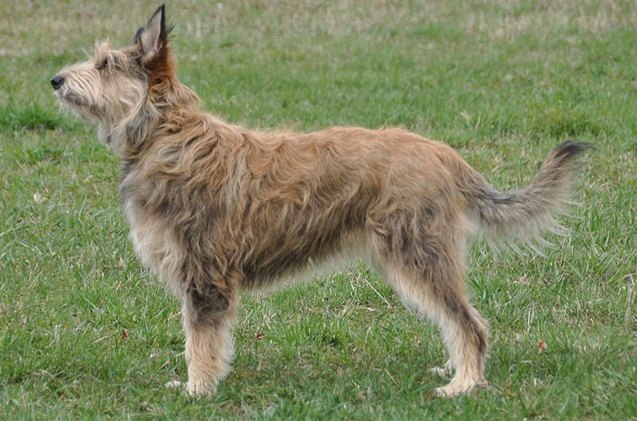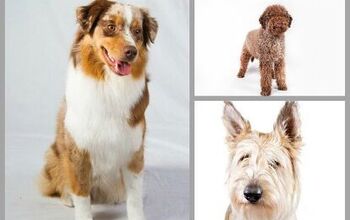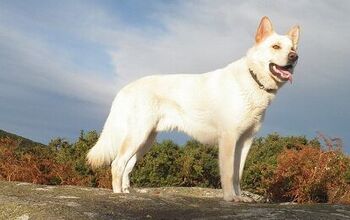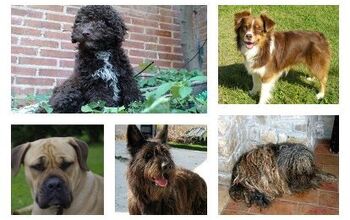Berger Picard


About Berger Picard
The Berger Picard (pronounced ‘Bare-zhay Pee-carr’) also known as the Picardy Shepherd, is considered to be France’s oldest sheepdog. In fact, its scraggly, mutt-like appearance hides a rich and storied history that dates back to the 9th century. It is a medium-sized, well-muscled dog with a slightly elongated body. Its ears are pointy and erect, and its eyebrows are bushy, but not excessively so that they cover the dog’s eyes. The Berger Picard’s outer coat is rough and scraggly to the touch and covers a soft, dense undercoat.
Like most breeds of sheepdog, Berger Picards are lively, intelligent, vigilant and assertive. They are highly responsive to obedience training and require an owner with a gentle but firm touch. Although still used for herding purposes in their native France, they are also used in dog agility trials, tracking, obedience, showmanship, Schutzhund, flyball, lure coursing, French Ring Sport and herding events. They are also a highly loyal breed of dog and make excellent companions.
Like most breeds of sheepdog, Berger Picards are lively, intelligent, vigilant and assertive.
First brought to northern France by the Celts during the 9th Century, Berger Picards have been used as herding dogs by the French for centuries. They have also been featured in various tapestries, engravings and woodcuts including that of Clément Delorme, the 1st Master Shepherd of France. Berger Picards were also used to smuggle tobacco and matchsticks across the Franco-Belgian border. These items of contraband were put in goatskin pouches and attached to the scraggly coats of the Picards, where they would not draw any unwanted attention.
When the trench warfare of World War I and World War II reached northern France, the populations of Berger Picards reached an all-time low. The breed saw a partial revival after the end of World War II and has since been featured in various films such as “Because of Winn Dixie,” “Daniel and the Superdogs,” and “Are We Done Yet?”
There are two schools of thought regarding the pedigree of Berger Picards. While some believe that they are descended from the Briard and Beauceron, others believe that they originate from Dutch and Belgian Shepherds.
Berger Picards are an energetic breed and should be fed on high quality dried or canned foods. Their diet can also be supplemented with occasional raw meats.
Like most other shepherding breeds Berger Picards are highly intelligent and responsive to obedience training.
Like most other shepherding breeds Berger Picards are highly intelligent and responsive to obedience training. However, they can be willful and stubborn when faced with a lack of leadership. Therefore it is important that owners display a calm and assertive style of leadership consistently.
Berger Picard males can weigh anywhere between 50-70 pounds.
Berger Picards are considered to be one of the mellower and easier going breeds amongst sheepdogs. They are also highly loyal to their owners and extremely affectionate towards children. Like most sheepdogs, Berger Picards require close human contact to live well-balanced lives and should be made to feel a part of the human ‘pack’. This can be done by taking them on long pack walks each day. Berger Picards can be willful and stubborn if they sense weakness or doubt in an owner. Thus it is important that owners be calm and assertive with setting rules, boundaries and limitations.
Berger Picards generally do not display any great hunting instincts and get along well with other dogs and pets. However, it is advisable to socialize them with other animals early on in life to ensure that problems do not arise as they grow older.
Berger Picards are naturally vigilant of strangers and make good guard dogs. They are however rarely aggressive and will only attack if they feel that their owners are under immediate danger.
Berger Picards are generally a very healthy breed of dog. They can sometimes have problems with hip dysplasia. Certain hereditary ailments such as progressive retina atrophy and retinal dysplasia can occur in certain lines.
Berger Picards have a life expectancy of around 12-13 years.
Berger Picards are a high energy breed of dog and require a significant amount of daily exercise. They make excellent jogging and hiking companions and will also enjoy a good run alongside a bike. Like most working breeds, they are at their happiest when given a ‘meaningful’ task.
Berger Picards are considered to be one of the mellower and easier going breeds amongst sheepdogs.
The AKC has this to say about the Berger Picard: “A medium-sized, active and athletic herding dog, the Berger Picard was bred to be a working companion, enthusiastically performing its job while also responding well to training. This breed has a shaggy, wiry topcoat with a short, dense undercoat to produce a weatherproof coat that is overall rough to the touch. The Picards coat comes in shades of fawn with or without gray underlay and trim on the ears as well as brindle. Monthly brushing is necessary to prevent matting, with occasional bathing and hand-stripping of the ears to neaten.” The Berger Picard was officially recognized by the American Kennel Club in 2013.
Despite its scraggly appearance, the Berger Picard is a relatively low maintenance dog. Their coats shed lightly and only need to be groomed once or twice a month. They also have a very slight doggy odor and do not need to be washed.
Berger Picard puppies are highly energetic and should be socialized with various animals and strangers at a very young age.
Photo credit: Cufleadh/Wikimedia

Amy Tokic, Editor of PetGuide.com, is a passionate animal lover and proud pet parent of Oscar, a Shih Tzu/Chihuahua cross, and Zed, a Japanese Chin. Her love of animals began in kindergarten, when she brought her stuffed dog Snoopy into class with her every day. Now, she writes about her adventures in pet ownership and tirelessly researches products, news and health related issues she can share with other animal enthusiasts. In her free time, Amy loves perusing used book and record stores, obsessing over the latest pet products available and chasing squirrels with wild abandon (a habit attributed to spending too much time with her pooches).
More by Amy Tokic

























